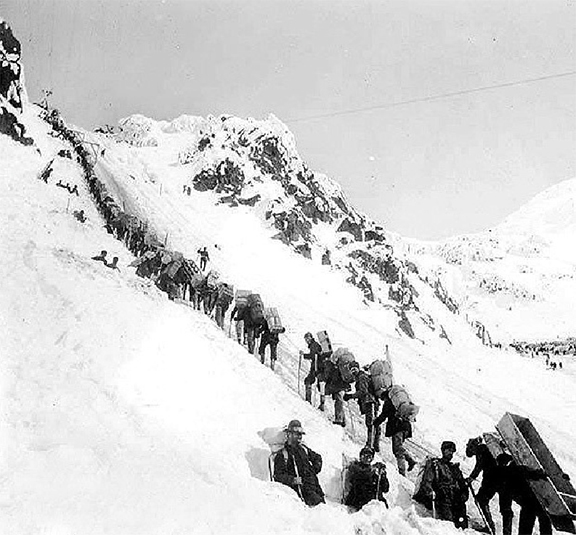By Amos Sarrouy
When gold was discovered in the Klondike in North Western Canada in the late 1800s, more than 1,000 people rushed to the area. When ships carrying gold first arrived in the United States, that too sparked a fever. Americans stampeded to the Klondike hoping to get rich. To prevent starvation among the reckless gold seekers the Canadian authorities refused to allow anyone in unless they had a year’s supply of food. Between the weight of supplies and all their equipment, many of the prospectors had to move their baggage in stages, carrying around 29 kg at a time. Some of them had to make the 30-mile trip over the mountains and down the Klondike River more than 30 times.
In less than a year Dawson city exploded from 500 people to over 30,000. In the winter the temperature often dropped below -50°C. The summers were dry and hot and prospectors, diggers with shovels and picks, had to deal with shortages, wild animals, and thieves. Of the more than 100,000 who travelled to the Klondike hoping to make their fortune, many died, many lost everything, and only a few hundred became rich. But gold is a magic word and danger disappears when people hear it.
That was the golden age of prospecting in Canada. Gold mining is very different today. The vast majority of mines are operated by multinational corporations like Barrick Gold and Goldcorp. Their mines run on an industrial scale, employing thousands of workers and expensive equipment to extract tons of gold. Prospecting is still


